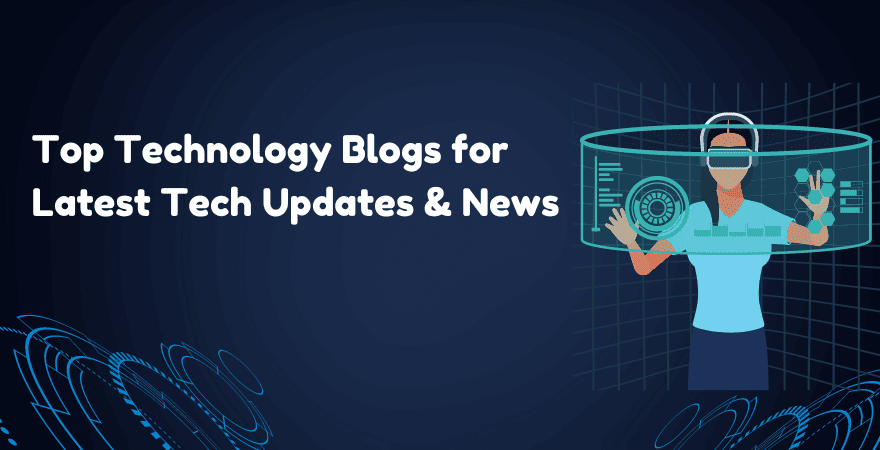Improve Your Knowledge with the Best tech blog Including Industry Professionals
Improve Your Knowledge with the Best tech blog Including Industry Professionals
Blog Article
Recognizing the Surge of Side Computer in Today's Digital Globe
In the swiftly evolving landscape of modern technology, edge computer becomes a pivotal force, reshaping exactly how data is refined and made use of. This paradigm shift is driven by the proliferation of IoT devices and a rising demand for immediate data handling. By transitioning data management closer to the source, edge computer addresses vital latency issues while enhancing transmission capacity usage and boosting safety and security actions. As industries pivot in the direction of smarter, more efficient systems, comprehending the nuances and ramifications of this technological innovation becomes necessary. What does this mean for future advancements and the electronic ecosystem in its entirety?
What Is Edge Computing
Side computer, although a relatively recent advancement in the realm of innovation, essentially transforms how information is refined and taken care of by bringing computation and data storage closer to the place where it is needed. Unlike conventional cloud computing versions, which often rely upon centralized information facilities that can be geographically far-off, edge computing decentralizes information handling. This proximity minimizes latency, boosts real-time data processing, and enhances the general user experience by guaranteeing quicker feedback times.
At its core, edge computing involves a network of localized gadgets and framework, such as routers, portals, and sensing units, qualified of processing data at or near the source. This local handling capability is specifically important for applications requiring immediate information evaluation, such as autonomous cars, commercial automation, and clever cities. In addition, by unloading information processing tasks from main servers, edge computing reduces transmission capacity requirements and enhances information privacy and safety and security, as sensitive information can remain on-site instead of passing through substantial networks.

Secret Drivers of Fostering
Several elements are moving the adoption of side computing in today's digital landscape. Edge computing addresses this requirement by making it possible for information handling closer to the information resource, minimizing latency and improving real-time decision-making capacities.
An additional significant driver is the need for enhanced data transfer efficiency. Centralized cloud systems can end up being overwhelmed with the large volume of data produced by IoT tools, bring about bottlenecks (Best tech blog). By refining information at the side, companies can alleviate network blockage and boost overall system efficiency
Furthermore, safety and security and personal privacy issues are pressing organizations towards side computing. By refining delicate information locally, firms can minimize dangers linked with information transmission and direct exposure to possible cyber dangers.
The surge of applications needing real-time processing, such as self-governing vehicles and enhanced truth, likewise necessitates the rapid reaction times that border computing provides. Jointly, these motorists are making edge computing an essential element of modern IT facilities, leading the way for its widespread adoption across different industries.
Advantages Over Cloud Computer
How does edge computer differentiate itself from standard cloud computing? Mostly, side computing brings information processing closer to the resource of information generation, commonly on neighboring servers or neighborhood tools, rather than counting on centralized information. This closeness dramatically lowers latency, allowing real-time data processing and decision-making. For industries where milliseconds matter, such as autonomous vehicles or industrial automation, the reduced latency given by edge computer can be essential.
In addition, edge computing improves transmission capacity efficiency (Best tech blog). By processing data locally, just the required data is transmitted to the cloud for further evaluation or storage, reducing the volume of information that passes through the network. This not just eases network blockage yet additionally lowers information transmission expenses
Side computing additionally offers better information privacy and security. Delicate information can be refined in your area without being sent to the cloud, decreasing the direct exposure to possible cyber hazards. This is particularly valuable for sectors dealing with secret information, such as healthcare and economic solutions.
Moreover, edge computing guarantees better strength and reliability. Clicking Here Regional processing enables proceeded operation even when connection to the cloud is compromised, maintaining necessary features and services despite potential network disruptions. These benefits collectively demonstrate side computing's transformative capacity in enhancing efficiency and protection in digital ecological communities.
Difficulties and Factors To Consider
While edge computing provides many benefits, it additionally offers one-of-a-kind obstacles and considerations that should be dealt with to totally understand its capacity. Furthermore, managing and keeping track of a decentralized network of side devices can be complex, needing innovative tools and methods to make sure seamless procedure and maintenance. Best tech blog.
An additional factor to consider is the scalability of side computer solutions. As the variety of linked devices grows, so does blog the demand for refining power at the side, which can lead to resource restraints. Organizations should very carefully plan their framework to accommodate this growth without compromising efficiency or performance.
Interoperability is another essential factor. With different hardware and software parts entailed, making sure compatibility and smooth combination can be difficult. Standardization initiatives are vital to assist in interaction between inconsonant systems.
Future Fads in Edge Computer
Anticipating the future, edge computing is poised to change different sectors by enabling much faster data handling and reducing latency. As the volume of data created by IoT gadgets continues to grow, side computing will certainly end up being progressively important in managing this increase effectively.
An additional arising fad is the advancement of edge-native applications developed particularly to utilize the distinct abilities of edge computing. These applications will certainly maximize efficiency and source utilization, causing boosted effectiveness throughout different markets. Innovations in 5G innovation will better boost side computing by offering the needed infrastructure for high-speed, low-latency communication in between devices and edge nodes.
Conclusion
Side computer's increase is driven by the spreading of IoT tools and the requirement for real-time data processing, which improves effectiveness by decreasing latency and decentralizing information monitoring. This method reduces data transfer inadequacies and safety and security issues, facilitating developments in applications like autonomous lorries and clever cities. Despite difficulties such as facilities intricacy and integration, the future of side computer promises an extra responsive electronic environment, with proceeded advancements shaping its development and increasing its applicability across industries.
Side computing, although a fairly current innovation in the realm of modern technology, fundamentally changes how data is processed from this source and managed by bringing calculation and data storage space closer to the location where it is required. Unlike conventional cloud computer versions, which frequently rely on central information facilities that can be geographically far-off, side computing decentralizes information handling. Additionally, by offloading data handling jobs from central servers, side computing lowers bandwidth demands and improves information privacy and safety and security, as sensitive info can stay on-site instead than going across comprehensive networks.

Report this page